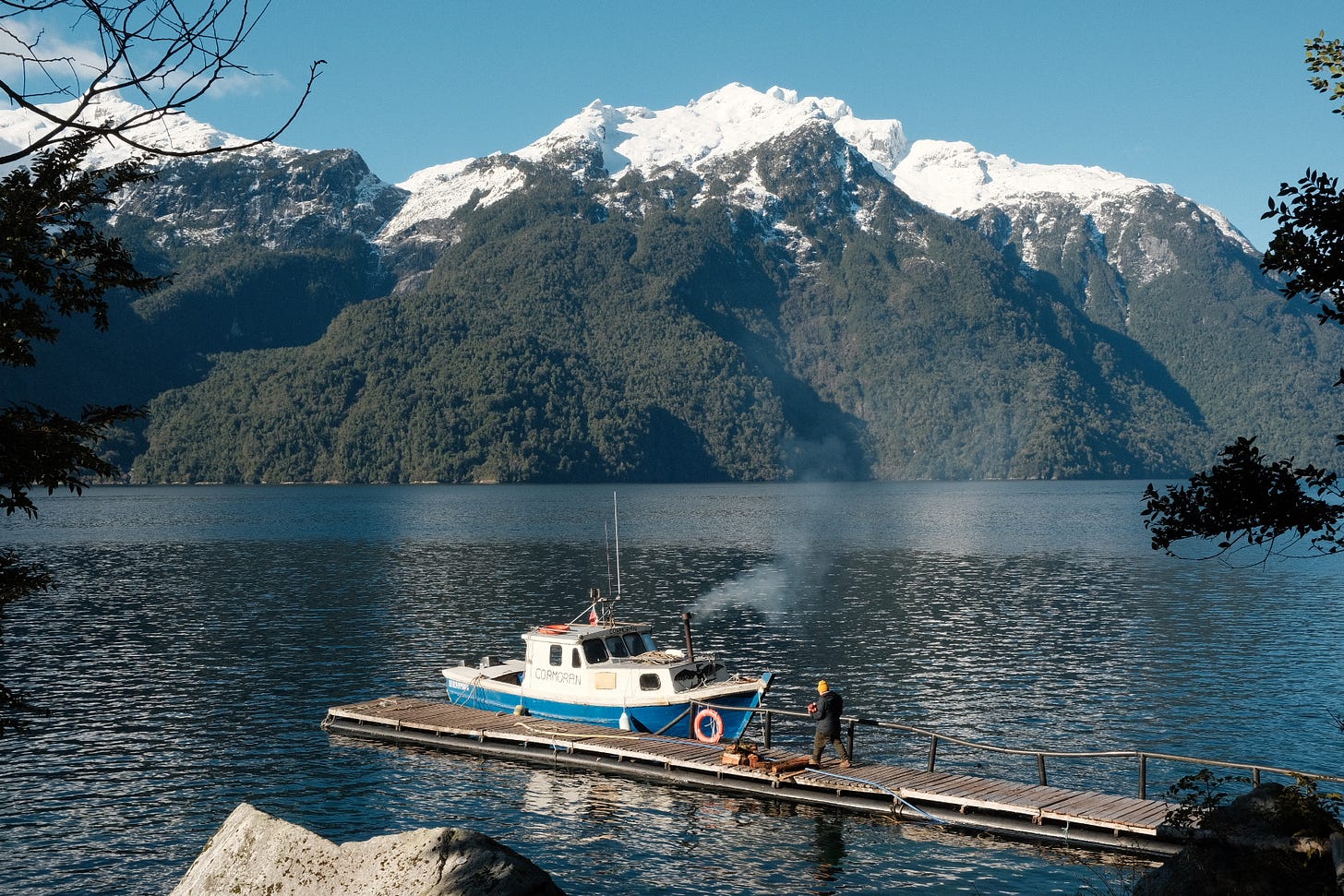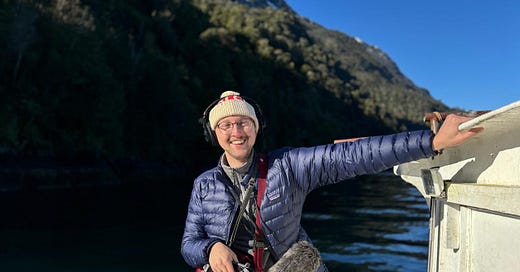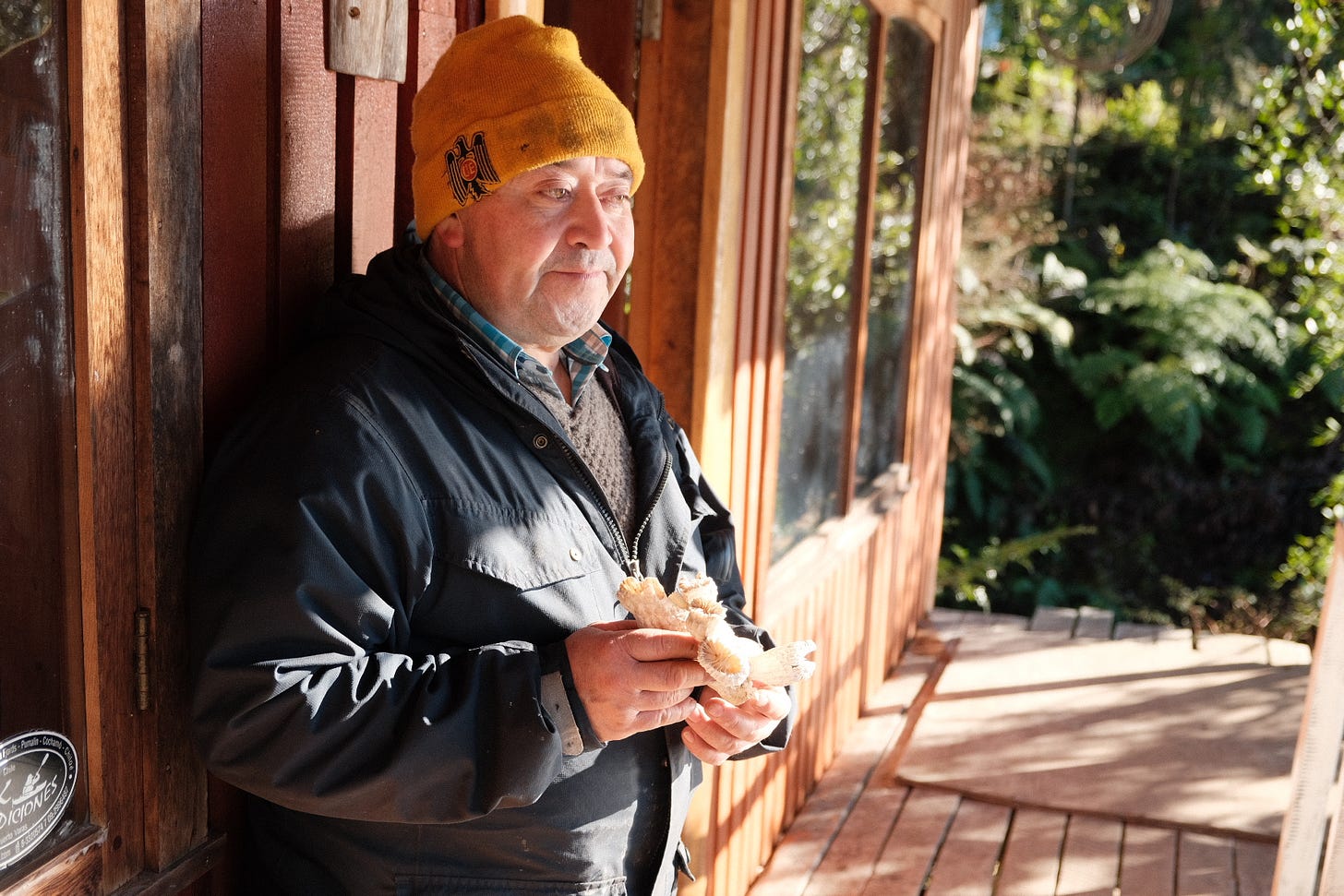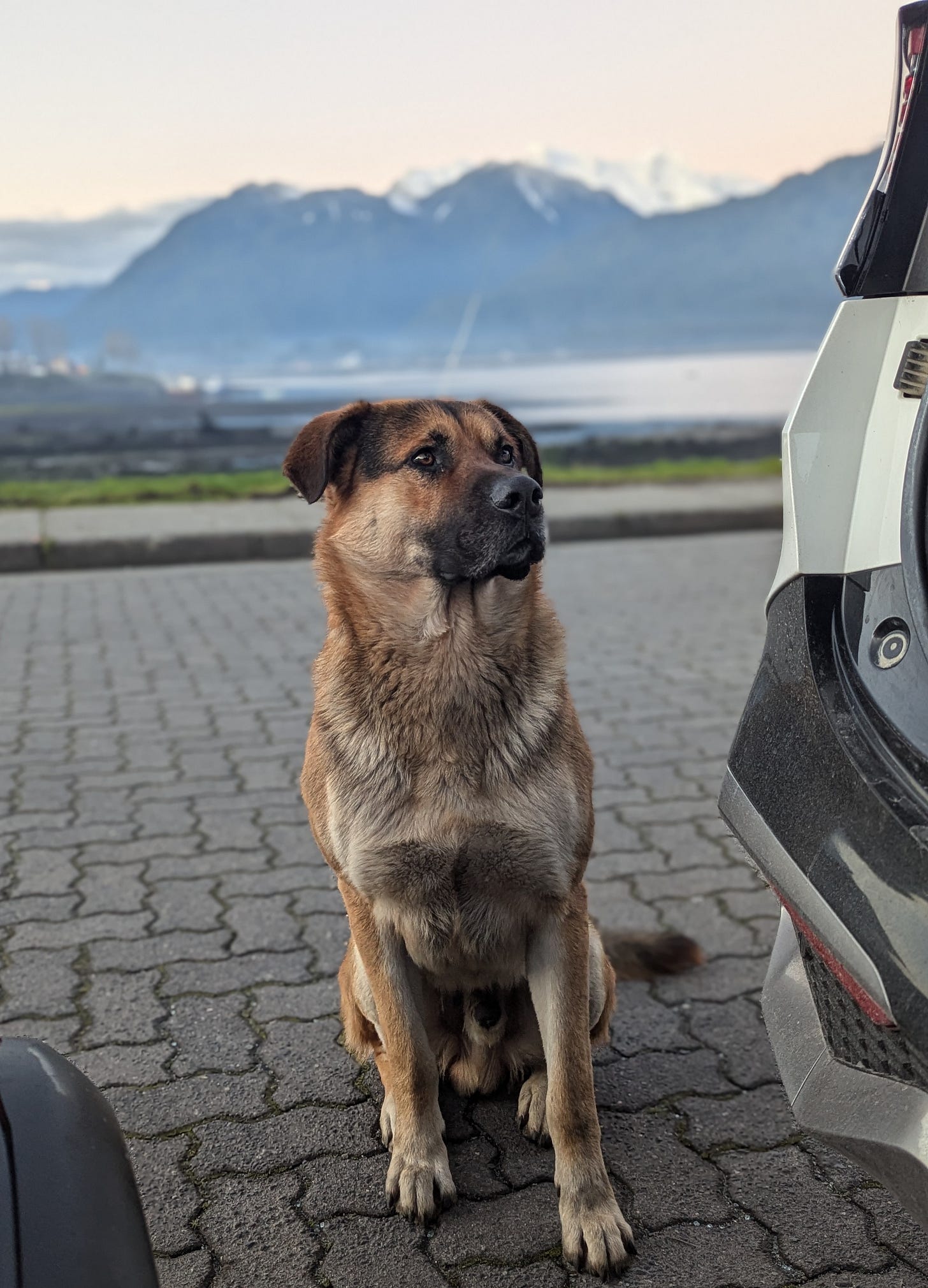I’m back home now from Chile and working on all the stuff that inevitably follows a reporting trip—putting expenses into a spreadsheet, listening through dozens of hours of interview recordings, typing up pages of handwritten notes, sorting through photos and (most importantly) trying to figure out the shape of the story I need to write (on a deadline that’s approaching pretty quickly). So to procrastinate on all that, I thought I’d write a bit today about getting out of the lab and into the field… when doing so isn’t built into a reporting plan.
When Rhian Waller, a cold-water coral biologist from Sweden, invited me to a lab in Chile to cover her research on cold-water coral spawning, I said yes and pitched the idea to my editor at Hakai Magazine. The logistics were pretty much sorted at that point. But from the beginning, I knew I wanted the story to go beyond the lab—I figured readers would want to know about this strange, deep dark Patagonian fjord where corals typically found under thousands of meters of seawater could somehow survive close enough to the surface for SCUBA divers to reach. But the lab where I would be for most of the week was some six hours (by car plus three ferries) away from the fjord. Getting there meant leaving the research team—my hosts and the story’s main characters—behind.
This is where having a local collaborator came in handy. I knew I couldn’t make this work alone, so I teamed up with fellow Pulitzer Center grantee and Chilean journalist Muriel Alarcón to help me navigate the culture and language on the ground (and I say collaborator and not “fixer” because we’re working on this project as partners and co-bylining several stories—the way I think it should always be done). Through one of the Chilean researchers at the corals lab, we met Boris Hernandez, a lifelong resident of the isolated Comau Fjord, who offered to house us, be interviewed and taxi us around the fjord on his hand-built fishing boat, the Cormoran. And so, after a long journey, we made it to the field!
What we learned exploring Comau is going to be a story on its own—a tale of paper parks, "pristine" nature, rampant polluting aquaculture, and science as a force for positive change—both environmental and economic (no spoilers). Boris turned out to be an amazing source. It goes to show (and I know it’s a cliché) you never know what you’ll find when you allow time to just get out there, talk to people and listen to their stories. And I mean, look at this place! Beneath those icy waters, imagine thousands of orange, pink and white little corals thriving. I had to see it myself!

Lastly, for fun, some international field reporting lessons I learned the hard way:
Bring plenty of batteries. I thought it would be easy enough to find AAs when I got to Chile. I ended up driving rural shop to shop buying up dusty, individually packaged batteries from bins all over the island of Chiloé, with Muriel translating what I needed. There may not be any AA batteries left in the region.
Bring what you need to sleep well. If the farm next to your cabaña happens to have a rooster that starts crowing at 2 a.m. and diligently continues until sunrise, you’ll wish you had packed earplugs. Otherwise you will not be on top of your game for a reporting day that starts with a 5 a.m. visit to the coral lab.
Have local cash on hand—you may be riding many more ferries than you expected (possibly too specific, but nevertheless, cash is good to have).
If you are caffeine dependent, make sure you have a way to make coffee. The researcher I was following (from the U.K.) was, unfortunately, a big tea drinker. Luckily, the Chileans at the lab run on Nescafé Tradición instant, which was good enough for me.
Reading list
What I’ve been reading recently (and you might be interested in too).
Patagonian paradise lost? The environmental hazards of farming fish in a warming world (Jessica McKenzie, Bulletin of the Atomic Scientists)
This is most comprehensive and up-to-date reported piece on the current state of aquaculture and environmental degradation in the Comau Fjord.
Roaming-with quiltros (Sebastian Ureta, NatureCulture)
I was surprised (and delighted) to learn about quiltros in Chile—free-roaming dogs who act as neighborhood guardians, friends and even political activities. This is my favorite overview, from one of my favorite academic journals.
The Enigmatic Earthquake Hotspot in America’s Heartland (Freda Kreier, Undark)
I’d never felt an earthquake until last month in Chile. But there’s a big ol’ faultline really close to my home in the Midwest. I’ve been curious about it for a long time, and this piece answered so many of my questions.
A Fossil Mystery, Solved by a Spin (Jack Tamisiea, New York Times)
I really like Jack’s paleontology reporting, and this is a fun one. I love that they made this an interactive—you can spin the fossil yourself!







